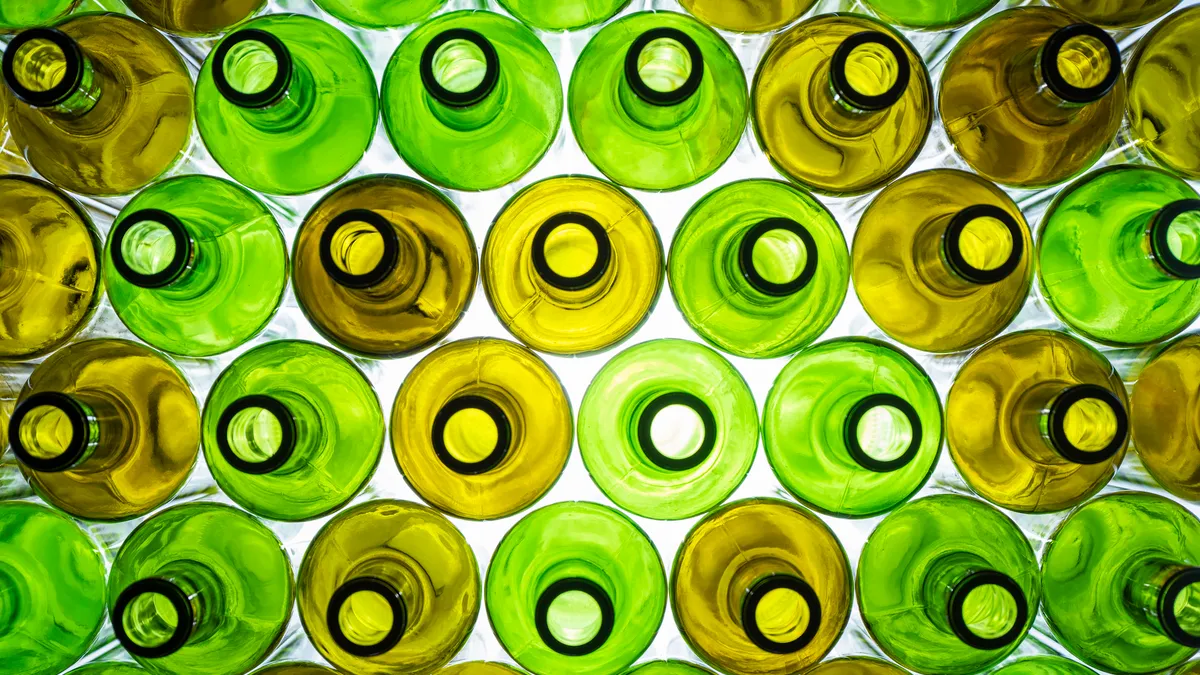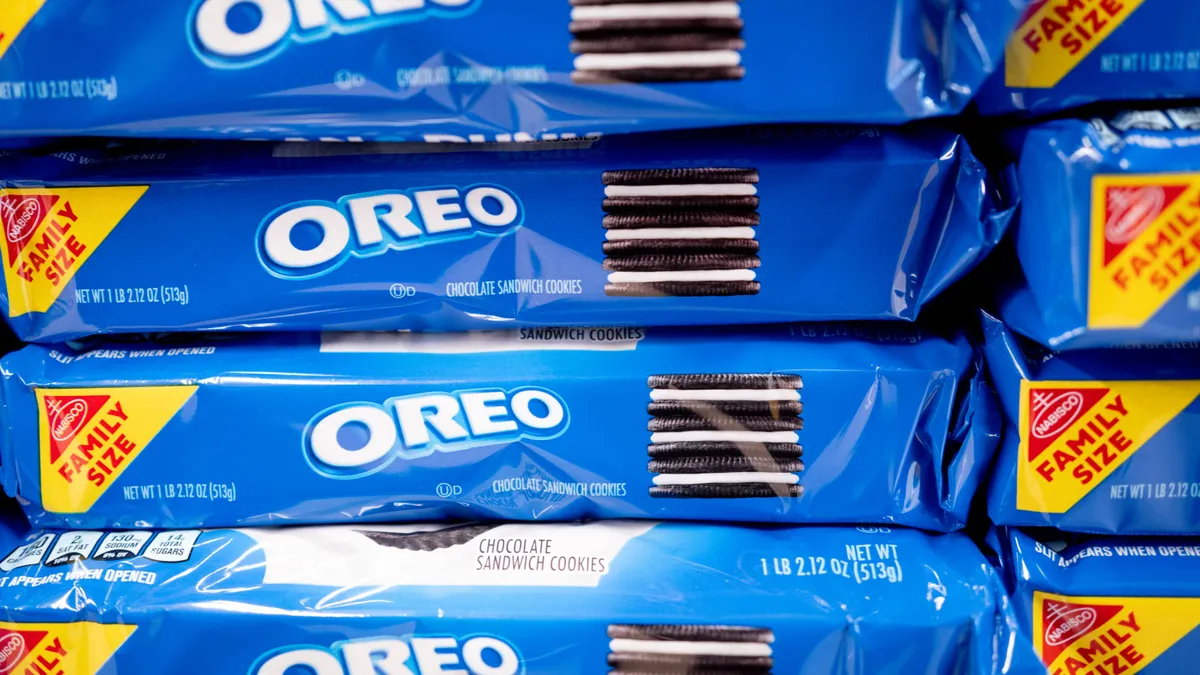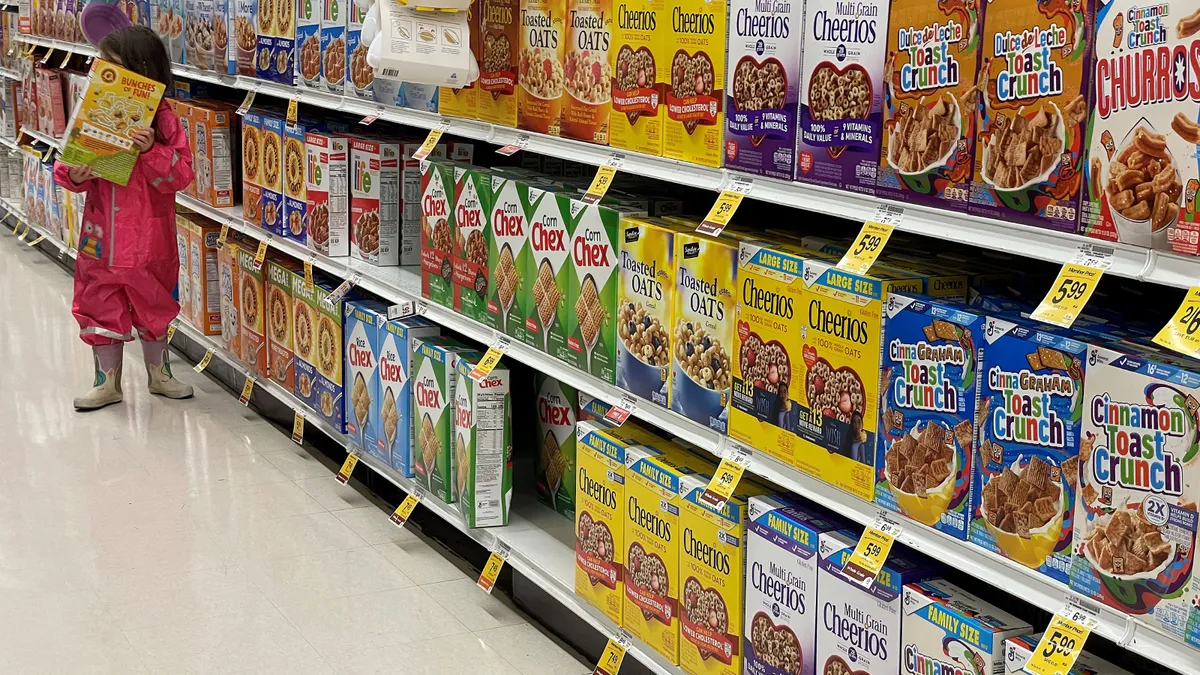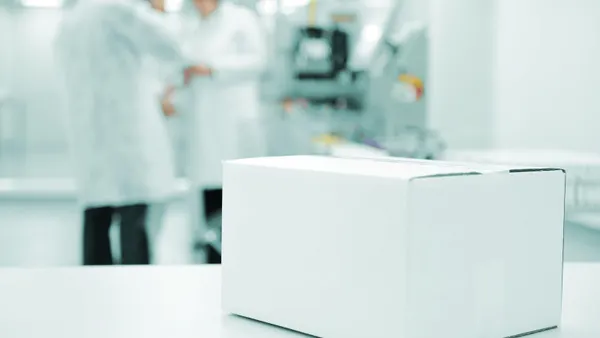As winemakers look to reduce their carbon footprints, some are working to reduce the weight of their glass bottles — given the heat and energy involved in production — or rethink their packaging entirely.
Champagne Telmont, along with French glassmaker Verallia, recently completed testing on what is considered to be the lightest champagne bottle in the world, at a record weight of just 800 grams. The new lighter bottles will generate approximately 4% less carbon dioxide per bottle produced.
Whenever bottle weight is reduced, fragility must be considered. It is a particularly challenging endeavor in the case of sparkling wines, which are typically packaged in thicker, heavier glass.
"There is a lot of pressure in a bottle of champagne — twice as much as in the tire of a car!" said Ludovic du Plessis, president of Champagne Telmont, via email.
Ten years ago, Verallia initiated a weight reduction from 900 grams to 835 grams. Trimming off an additional 35 grams without weakening the bottles’ mechanical resistance to gas pressure wasn’t easy.
“Every reduction is more difficult than the previous one, because you can’t alter the bottle’s mechanical resistance. You have to move forward very cautiously, reducing gram after gram, making lots of tests," du Plessis said.

This type of lightweighting is one way for beverage manufacturers to reduce their GHG emissions amid climate pledges, since less fuel is consumed during the manufacturing and transportation of lighter bottles. For Telmont specifically, the glass used for bottles represents about 24% of its total emissions.
Beyond the lighter glass, Telmont is reducing other types of packaging that is often involved in shipping wine. “We decided in June 2021 to stop all gift boxes and other useless packaging,” said du Plessis. Plus, the team has switched to using only green champagne bottles that are described as 100% recyclable and made with up to 87% recycled glass.
Increasing the amount of recycled content in bottles is another trend that can also help to improve the environmental profile of wine packaging. Another example is wine retailer Laithwaites, which last year launched a wine bottle made from 100% recycled glass.
U.S. EPA data shows that less than one-third of the overall glass stream was recycled in 2018. The Glass Packaging Institute has set a goal to increase that recycling rate to 50% by 2030, which it estimates could reduce approximately 1.4 million metric tons of greenhouse gas emissions annually.
Alternative packaging
Some winemakers are moving away from glass and instead experimenting with alternative packaging, with wine professionals from across the industry calling for the shift.
The global canned wine market is set to continue expanding. According to research firm Reports and Data, the market is projected to reach $1.4 billion by 2032, with a projected revenue compound annual growth rate of 10.8% during the forecast period.
Union Wine Company, the business behind the Underwood wine brand, next year will celebrate a decade since releasing its first commercial cans. The company still utilizes bottles too, but cans helped the business to ship more wine as it expanded while offering both environmental and economic benefits.
“We’re literally able to ship almost twice the amount of volume because of the can’s weight compared to glass,” said Ryan Harms, founder and owner, adding that the canning process is a little more technical and complex than bottling.
“With a non-carbonated product, you have to put liquid nitrogen in the can,” Harms explained. “You seal it, and that gives the pressure so that the cans aren’t soft when they’re sealed.”
Another alternative to glass bottles is bag-in-box. While this format is not new, some winemakers are now adopting it for higher-end products.
Last year, California winery Tablas Creek sold out the initial batch of 324 boxes of its Patelin de Tablas Rosé in just four hours. Partner and General Manager Jason Haas highlighted one challenge that the winery faced: There wasn’t a single mobile boxing line in all of California. “So, we had to rent and eventually buy our own filler — which is only semi-automated and means we lose on labor about what we save on packaging,” he said over email.
Consumer acceptance of alternative packaging will be key to its success, according to winemakers. Harms says that he has received a great reception for his canned wine, but he has experienced a little more pushback outside of the U.S. because some consumers still associate cans and bag-in-box style packaging with inferior wines. The way that canned and boxed wines are sometimes treated in retail settings — located in a different part of the store — could feed into these consumer perceptions.
“I felt very strongly that we wanted to try to get on the shelf with glass,” Harms said. “I want this to be seen as just as good as anything else.”

Some packaging companies are finding innovative ways around this image problem for glass alternatives. One is Frugalpac, a UK-based producer. By creating a cardboard packaging option in a recognizable bottle format, CEO Malcolm Waugh hopes to make alternative packaging for wine more appealing to consumers while helping brands to stand out.
The bottle is designed to run on existing filling lines with some modifications. But with investments in dedicated filling lines, wineries can fill Frugalpac bottles at higher speeds.
“Our remit really was to get as close to a bottle as possible, with minimal carbon, minimal plastic and also try to make the bottle more appealing when it stands on a shelf,” he said.
Frugalpac customers are getting noticed for their environmentally conscious efforts. In Italy, Cantina Goccia won the "Environment and Sustainability" Award at the 2023 Vinitaly Design International Packaging Competition. And in the U.S., Signal 7 wines recently won a PAC Global award and was named best in class in the Package Innovation Technical Design category for its bottle design that uses Frugalpac’s packaging.
But glass remains king in the wine world for now. Harms and his team are currently pursuing a lightweighting initiative and working closely with their local glass manufacturing partner in Portland, Oregon, explaining: “Within the last month, my team has been up there looking at what options exist for lighter weight glass.”
The current mold is 468 grams, and the new mold would be 397 grams. But Harms said that lightweighting can only go so far, as fragility on higher speed bottling lines could become a concern. “There are some practical issues that will come up as glass gets lighter and lighter,” he said.





















